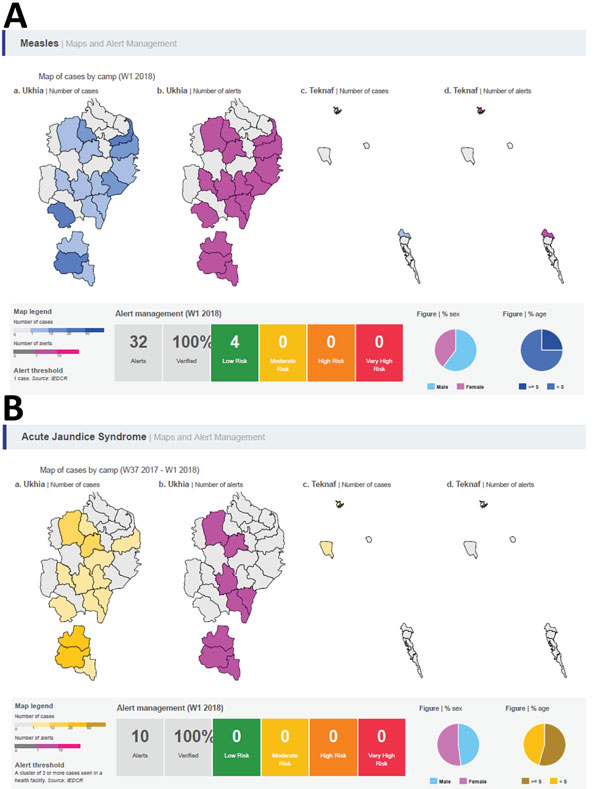Volume 24, Number 11—November 2018
Dispatch
World Health Organization Early Warning, Alert and Response System in the Rohingya Crisis, Bangladesh, 2017–2018
Figure 2

Figure 2. Screenshots of maps and alerts generated by the World Health Organization Early Warning, Alert and Response System during week 1, January 2018, in Rohingya refugee settlements in Cox’s Bazar, Bangladesh. A) Measles; B) acute jaundice syndrome.
Page created: October 17, 2018
Page updated: October 17, 2018
Page reviewed: October 17, 2018
The conclusions, findings, and opinions expressed by authors contributing to this journal do not necessarily reflect the official position of the U.S. Department of Health and Human Services, the Public Health Service, the Centers for Disease Control and Prevention, or the authors' affiliated institutions. Use of trade names is for identification only and does not imply endorsement by any of the groups named above.